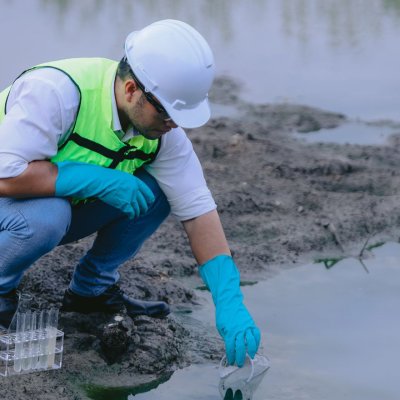What Are the 7 Principles of Sustainable Construction?
The construction industry is showing no signs of slowing down. While this means more opportunities and large-scale projects for builders and contractors, it also means more resources than ever will be used in the coming years.
However, there is a way to prevent this from happening: sustainable construction.
This approach promotes the efficient use of recyclable construction materials for projects, with the goal of reducing waste production and using fewer resources. But how can it help companies stay competitive in a cutthroat environment?
We’ll take a look at the seven principles that guide sustainable construction projects in this article and how they create eco-friendly spaces.
Sustainable Construction Methods
Building commercial and residential infrastructure alone constitutes 30% of the country’s greenhouse gas emissions (GHG), This negatively impacts the environment by producing a lot of pollution and waste as non-renewable resources are expended.
Sustainable construction aims to reduce the environmental, social, and economic impact of building. This approach encompasses the entire life cycle of infrastructure—from its design to maintenance—to minimize waste production and natural resources use.
To achieve this sustainable construction, seven principles are used as a framework by independent contractors as well as commercial builders. They are as follows:
- Sustainable architecture
- Eco-friendly construction materials
- Energy efficiency
- Longevity
- Waste reduction
- Improved indoor air quality
- Enhanced water conservation
These principles ensure a “greener” environment without compromising the project or the quality of the infrastructure being built. They also provide long-lasting benefits, which we’ll dive into more below.
Understanding Sustainable Construction Methods
Construction sites use tons of resources, many of which can affect the environment and the communities nearby. To build better and more eco-friendly buildings, these sustainable construction methods have to be in place:
Sustainable Architecture
The importance of sustainable construction cannot be overstated when discussing the impact on a local community. Following best practices will help you create an infrastructure system that is inclusive, supportive, and accessible to all.
If you’re building a hotel or a community centre, make sure to allot spaces for events or social gatherings or implement a floor plan that everyone can navigate. This will ensure you’ll build a space that will be usable for generations.

Eco-Friendly Construction Materials
Resources are only becoming more limited with time. So, in the early stages of design planning, sustainable methods already have to be considered.
Inject some vitamin green into your project by using sustainable construction materials that are recycled. Additionally, you should look into the durability of the materials you use—shy away from wood in favour of brick and concrete.
Consider using the BREEAM Assessment to see if you are reaching your sustainability goals. This is a globally-recognized environmental assessment and rating method for buildings, which checks against established standards over several categories.
Energy Efficiency
One of the biggest challenges building contractors face is making sure that a project is energy efficient. The value of energy efficiency is twofold: reducing costs as well as minimizing how much its operations depend on harmful fossil fuels.
Sustainable construction takes into account different insulation materials that reduce energy consumption, such as low-E windows. It also makes sure to maximize natural light and ventilation to reduce dependence on energy resources.
Longevity
Eco-friendly construction isn’t only about the materials you use, but also thinking about the building’s future, how it will be used, and how often it has to be maintained.
Therefore, it’s important to maximize the resources available to you—such as recycled steel or plastic—or choose non-toxic building materials to ensure a low environmental impact for a long time. When you build to last, you help the planet.
Focusing on longevity ensures that your building is capable of adapting to change and can be easily repaired, renovated, or repurposed if necessary.
Waste Reduction
One of the biggest challenges of sustainable construction is reducing the waste generated from demolition or reconstruction. This can be done by ensuring the materials used can be recycled at the end of the building’s life cycle.
Reusing materials also helps to reduce the amount of energy required for production and transportation, which in turn limits the harmful emissions released into the atmosphere. Using low-impact materials reduces the negative effects on the environment and promotes sustainable recycling at every stage of construction.
Improved Indoor Air Quality
Canadians spend 90% of their time indoors—poor indoor air is therefore a rather serious health risk. As a builder, you need to ensure you’re designing properties with proper ventilation that promote airflow and circulation.
This also includes considering the temperatures and humidity of the room for maximum health and comfort. Hot, humid air isn’t good for anyone!

Enhanced Water Conservation
Reducing the amount of water consumed in buildings is central to sustainable construction practices. This means designing water-saving measures, using low-flow showers and toilets, and water-efficient landscaping that improves wastewater treatment.
You could also install a sub-meter to record and monitor water consumption in different parts of the building. Additionally, checking regularly for leaks and conducting repairs as necessary will help improve water efficiency.
Cover Your Bases With Contractors Insurance
All building sites—even those that employ sustainable construction methods—can be risky places to work for contractors of all experience levels.
There’s no guarantee a simple accident won’t end up in a lengthy legal battle that could leave you in debt. This is why you need a risk-management strategy that protects you from financial losses should an unfortunate incident arise.
Contractors Insurance is a trusted provider of customized insurance solutions in Ontario. You can trust our dedicated team of insurance experts to devise a plan that protects the future of your business—and your health.
Contact us today to learn more about our services!
BACK TO ALL ARTICLES





Leave a Reply
Required fields are marked *
Leave a Comment